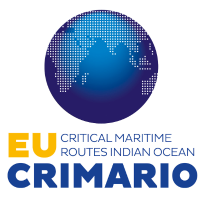At the recent CGPCS 20th plenary in Mauritius, the SAFE SEAS team held a meeting with representatives of EU Critical Maritime Route Wider Indian Ocean (CRIMARIO) project to learn more about the projects plans and activities with regard to enhancing Maritime Situational Awareness (MSA) and capacity building in the western Indian Ocean.

The meeting covered several key areas of CRIMARIO’s capacity building activity as well as limitations, trade-offs and opportunities. This included new methods of strategic communications, the potential of the web-based information sharing and incident management network (IORIS), as well as bespoke national training and capacity building workshops. Challenges were also identified such as nurturing local buy-in, relations with industry, transferring intellectual capacity to local agencies and implementing sustainable capacity within rigid time strictures. Key lessons learned were also discussed in this regard, such as the importance of ensuring a collaborative approach at the mandate design phase to maximise local ownership and sustainable capacity.
Of particular relevance for SAFE SEAS is how CRIMARIO designs and implements its capacity building training and exercises by engaging in country consultations to identify specific needs and national capacity limitations. While the project has a regional focus, it was highlighted that national level engagement is also of vital importance, owing to different contexts and levels of capability. It was also suggested that local centres are important for acquiring local knowledge to complement larger information sharing mechanisms – thereby building a more holistic maritime situational picture.
Such consultations support the work of SAFE SEAS in developing a best practice tool kit for the planning, programming, and implementation of capacity building projects.
